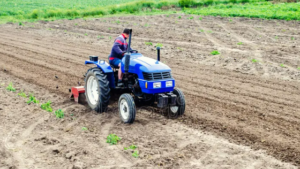In the second quarter, South Africa’s agriculture sector recorded a trade surplus of $1.47 billion, representing a 6% decrease compared to the same period last year. The surplus was achieved despite a slight 0.1% year-on-year decrease in agricultural exports, which totaled $3.37 billion.
This decline followed a 6% growth in exports in the first quarter of the year. The drop in the second quarter is attributed to lower prices for some agricultural products and a reduction in export volumes. Despite the decrease, the Agricultural Business Chamber of South Africa (Agbiz) noted that port efficiency had improved significantly compared to 2023, indicating that the decline in export value was driven by price factors and a challenging domestic production environment, particularly for grains and oilseeds, rather than logistical issues. The top agricultural exports by value in the second quarter included citrus, apples, pears, maize, wine, dates, pineapples, avocados, sugar, grapes, fruit juices, nuts, and wool. Regionally, South Africa remains a dominant player in African agriculture exports, accounting for 42% of the total export value. Key exports to the African market included maize, maize meal, sugar, apples, pears, wheat, soybean oil, fruit juices, ciders, and wine. Asia and the Middle East, South Africa’s second-largest agricultural market, primarily received exports of citrus, apples, pears, wool, nuts, sugar, beef, sheep and goat meat, berries, wine, and maize. The European Union remained the third-largest market, accounting for 19% of South Africa’s agricultural exports. Exports to the EU included citrus, dates, avocados, figs, mangos, guavas, apples, pears, wine, grapes, fruit juices, wool, and nuts. The Americas accounted for 6% of exports, while the United Kingdom made up 12%.On the import side, South Africa brought in $1.89 billion worth of agricultural produce in the second quarter, marking a 5% year-on-year increase. Key imports included wheat, palm oil, rice, and poultry. South Africa imports nearly half of its annual wheat consumption due to a decline in production in the Free State, driven by unfavorable weather conditions and profitability challenges. Additionally, the country lacks the climatic conditions necessary to grow rice and palm oil and sometimes needs to supplement local chicken production with imports to meet demand.
Despite the challenges, Agbiz emphasized that the overall export figures remain encouraging. The organization highlighted several areas for policymakers to focus on to ensure higher growth in the sector, including continued improvement of logistical infrastructure efficiency, retention of key markets in the EU, Africa, Asia, the Middle East, and the Americas, and the expansion of exports into more strategic markets such as South Korea, Japan, Vietnam, Mexico, Taiwan, the Philippines, and Bangladesh. Agbiz also pointed to the fifteenth BRICS conference’s outcome, emphasizing the need for deeper trade relationships through lower import tariffs and fewer biosecurity barriers. “This must remain on the agenda, and South Africa must work to persuade other BRICS+ members to prioritize resolving this trade-threatening issue,” Agbiz concluded.







